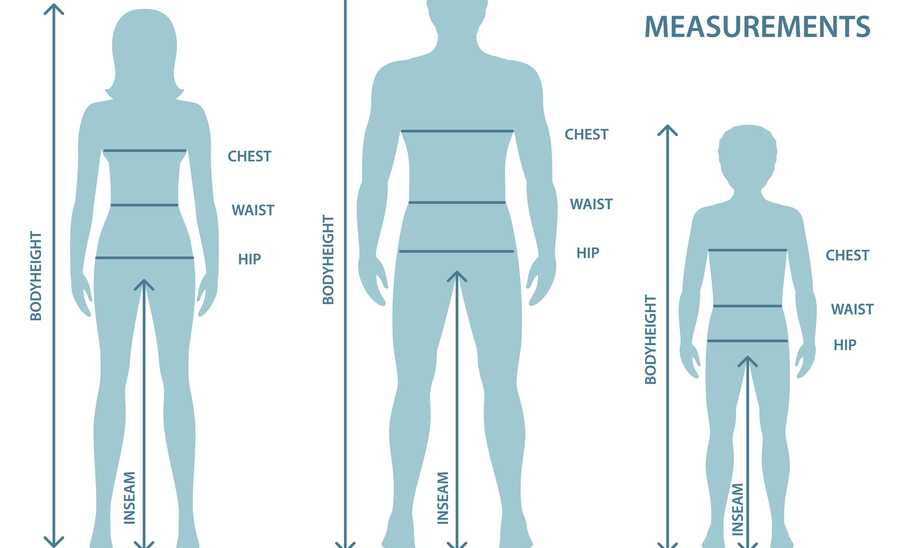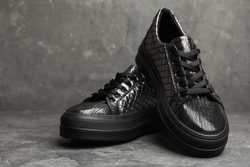How to Measure Your Waist for Pants, According to Experts

Our evaluations and opinions are not influenced by our advertising relationships, but we may earn a commission from our partners’ links. This content is created by TIME Stamped, under TIME’s direction and produced in accordance with TIME’s editorial guidelines and overseen by TIME’s editorial staff. Learn more about it.
Finding a pair of pants that fits exactly how you want can be tough, often it’s a mix of trial and error, guesswork, perseverance, and possibly sorcery. By knowing how to measure your exact waist size, you can take at least some confusion out of it, and by following the advice of our two experts below, you’ll be able to do just that.
“The simplest way to measure your waist is to use a soft measuring tape and place it above your belly button, at the smallest part of your waist,” says Elizabeth Davey, director of product at DUER. “Lay the measuring tape flat against your skin, making sure it’s snug but not tight (you should be able to fit your finger between the tape and your skin), and that it’s parallel to the floor. If you don’t have measuring tape, an easy trick is to use a piece of string, mark it and then measure it along a ruler.”
“Make sure you’re not holding your breath!” adds Melony Huber, founder of ethical lifestyle collection La Peony. “Breathe in and out normally and take the measurement on your breath out, to ensure you don’t take too tight of a measurement on your breath in.”
“There are two measurements you’re looking for when measuring for pant size: Waist and inseam,” explains Davey. These are her preferred steps for going about it.
“Using soft measuring tape, start by measuring your waist. To do this, place the tape above your belly button at the smallest part of your waist, and lay it flat against your skin, parallel to the floor.”
“Wrap the measuring tape around your waist, by holding the end of the end of the tape at your belly button and circling it around your back to the front of your waist (the tape should be snug, but not tight).”
“Next, measure your inseam by placing the measuring tape at the very top of the inside of the leg (where it joins the torso) and taking it right down to the ankle bone.”
“For the most accurate measurements,” Davey adds, “The tape should be directly against the skin, with no clothing in between.”
Note: This advice isn’t just for pants. Inseam even matters when it comes to running shorts for men—the difference between 4-inch, 5-inch, and 6-inch workout shorts can be striking.
“While taking measurements for men’s and women’s pants is for the most part the same, the main difference is the conversion to pant size,” says Davey. “For example, because men’s and women’s jeans are cut differently, a 30” waist will convert to sizes 29-31 in women’s jeans and a size 28 in men’s jeans.” Follow Davey’s steps below for an accurate measurement:
“Determine the rise of your pants and where you’d like them to sit on your body. If you’re taking measurements for high-waisted pants, you’re going to measure the waist, and if they’re more low-rise you’re going to measure closer to the hip, just above the buttocks.”
“Place the tape at your waist or hip and lay it flat against your skin, parallel to the floor. Wrap the measuring tape around your waist or hips (again, the tape should be snug, but not tight).”
“As with men’s pants, measure your inseam by placing the measuring tape at the very top of the inside of the leg and taking it down to the ankle bone.”
Bonus tip for measuring your waist: “An easy way to ensure you’re giving yourself room, but not too much room, is that you should be able to fit at least one finger in between your waist and the soft measuring tape,” says Huber.
This is essentially the same thing as measuring your inseam, as described by Davey. Again, this number isn’t only important for dress pants, chinos, and jeans, but also for leggings and even yoga pants.
“Using soft measuring tape, place the tape at the very top of the inside of the leg (where it joins the torso).”
“Take the tape down along the leg until it meets the ankle bone and you have your inseam length.”
“A proper fit is not only flattering, but comfortable,” says Huber. “It elevates your look, having clothing fit perfectly and look like it was made for you.” “Pants in general are always the trickiest to nail when it comes to sizing,” says Davey. “And, because so much of our shopping is done online now, knowing your correct pant size can save a lot of time and unnecessary returns and exchanges. It also offers you the best chance at finding a pair of pants that’s both flattering and comfortable.”
“Generally speaking, conversion charts are a great option,” says Davey. “They’re easy to use and find online. But, because sizing and fit vary from brand to brand, I always suggest going directly to a brand’s website and using their fit guide. At DUER, for example, because our jeans are high-stretch, they fit differently than a pair of raw, non-stretch denim. Our fit guide helps our customers determine their most accurate sizing and the style that best suits their body type.”
“Historically, the waist size of a pant used to be reflective of your actual waist measurement, but for a variety of reasons, that’s changed over the years (for example, many brands now use numeric versus waist sizing: 2, 4, 6, etc.),” explains Davey. “Because every brand, and even country’s sizing is different, to find your most accurate pant size, you’re always best off going directly to a brand’s fit guide.”
This isn’t always the easiest option, but it’s occasionally possible to get it right. “Apparel brands have come a long way in providing resources to help customers determine their size without trying on the product, so I think it’s definitely possible,” says Davey. “I’d also say that generally, products that are high-stretch are easier to purchase without trying on, since they offer more room and flexibility and adapt to the different curves and shapes of our bodies. Of course, if you have the opportunity, I do always suggest trying on pants in-store for the most accuracy.”
“Jean size used to correspond directly to true waist measurement, but as silhouettes have evolved to include high-, mid-, and low-rise, pants aren’t always intended to sit right at the true waist,” says Davey. “Vanity sizing—when brands label clothing with sizes that are smaller than the item's actual measurements—has also become more common, which means a lot of people end up sizing down in some brands and not in others.”
“This depends on a few factors,” says Davey. “First, it depends if you’re wearing high-, mid- or low-rise, or if your pants are rigid or high-stretch. A general rule of thumb is that you always want to be able to fit a few fingers between your pants and skin.”
This technique gained popularity in 2020 thanks to TikTok. Essentially, the claim is that you can tell whether a pair of pants will fit by putting your arm into the waist opening of the pants: If your elbow touches one side of the waist and your fingers touch the other, the pants will fit. Naturally, though, this isn’t going to work for everyone.
“I wouldn’t suggest using this rule because it doesn’t take into account different body types and proportions,” warns Davey. “When it comes to sizing, I don’t think you can use blanket rules, everyone’s body is different, so it’s all relative.”
Another hack recently made popular again by TikTok, the idea here is if you can wrap the waist of a pair of pants perfectly around your neck, with no excess material overlapping, they’ll fit around your waist. “This is actually quite an old-school trick!” says Davey. “Personally, I’ve never used it, but I’ve often seen people do it at flea markets. I don’t think it’s particularly effective, but in saying that, if you’re in a pinch and trying to figure out if something fits, my trick is to hold the edges of the pants waist to the edges of your own waist and see how far around it wraps or not.”
The information presented here is created by TIME Stamped and overseen by TIME editorial staff. To learn more, see our About Us page.



